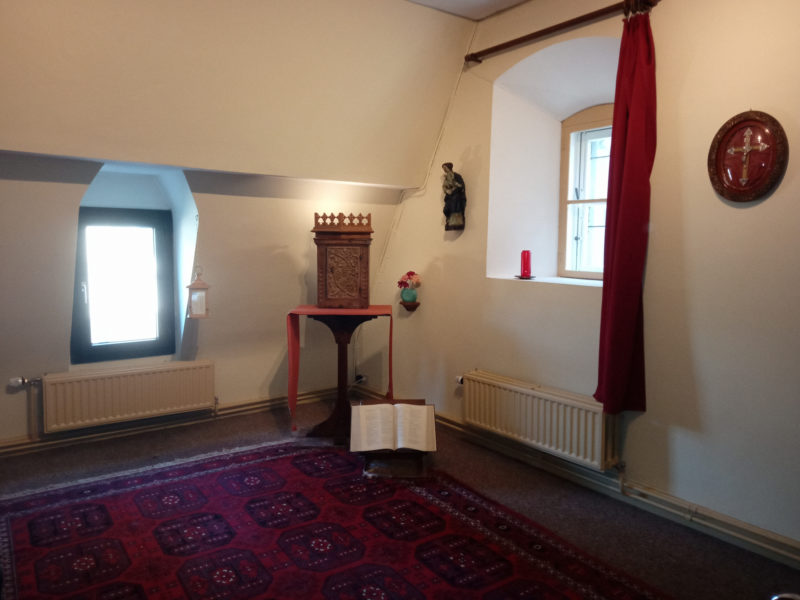MONASTIC LIFE
How to become a monk?
Each vocation is individual. Everyone lives it his own relationship with God. It’s not easy to express it to someone else. That’s why we describe here only the different stages of a monk’s life.
LE REGARDANT
A man, young or not so young who thinks he hears God’s calling to a monastic life, meets the Novice Master. With his help he will calmly examine for a year or two, if he reallly has the monastic vocation and if this desire lasts.
THE POSTULANT
If this is the case, he asks to enter the monastery. He then becomes a postulant. Over several months, he comes to know the inside everyday life of the monastery. He learns how to live in community; he attends courses which are necessary for his apprenticeship : he studies St Benedict’s Rule; he goes deeper in his Bible knowledge, in monastic history and particularly in Maredsous history; he becomes initiated into the liturgy and services. And above all, he learns to know himself, in order to search for God in prayer, in the community and in work.
THE NOVICE
This time gives him the opportunity to test the truth of his vocation, and for the community it is the opportunity to know him better and to consider if he is capable of being part of the community.
THE TEMPORARY PROFESS
At the end of being a novice, the novice is free to leave when he wants because he did not undertake any commitments. If he decides to go on in the monastic life, he asks to be part of the community and to take his first monastic vows. By a vote, the Chapter of the monks must give its agreement. A majority of two thirds is necessary.
The young monk then takes his first vows for 3 years. There are 3 vows for the Benedictines : stability (to stay as a monk in Maredsous), conversion of life, and obedience. He makes this commitment in front of the Father Abbot and the community, and he writes it on a form that he signs on the altar of the church. St Benedict wanted this act to be done with solemnity :
“As soon as he has laid down the form on the altar, the novice entones the verse : «Suscipe me, Domine secundum eloquium tuum, et vivam; et non confundas me ab expectatione mea» (Accept me, O Lord, according to Your promise, and I shall live; and let me not be confounded in my expectation). The whole community repeats this after him three times, adding at the end the “Gloria Patri” (Glory be to the Father).
“Then the novice prostrates himself before each monk, asking them to pray for him; and from this day he is counted as one of the community” (St Benedict’s Rule 58, 21-23).
During this period, the young monk studies ecclesiastical sciences, philosophy and theology, according to a study program adapted to each individual.
PROFESSION FOR LIFE
After 3 years, the temporary monk may still leave the monastery because it is acknowledged, by the community, that he agreed to stay for 3 years and that he was accepted for that same time.
If he wants to go further in the monastic life, he asks to take his vows once again, this time for his entire life. His request is voted on by the Chapter of the monks, this time requiring an absolute majority. Then the young monk makes his perpetual profession which commits him for his entire life. The community greets him as a full member and for ever.
This procedure may seem long. It is inspired by the wisdom which does not hasten events. A monastic vocation, a life vocation, is important. It must be peacefully tested over time, because the young monk and the community who welcomes him must be able to share joys but also ordeals, and the hazards of everyday life which will last for decades.
THE PRIESTS
After the profession, some monks are ordained priests, according to the community’s needs. But priests or not, all monks are equal in rights in the monastery.
CONTACT

Brother Jerome
Directeur du Noviciat
Rue de Maredsous, 11
5537 Denée – Belgique


